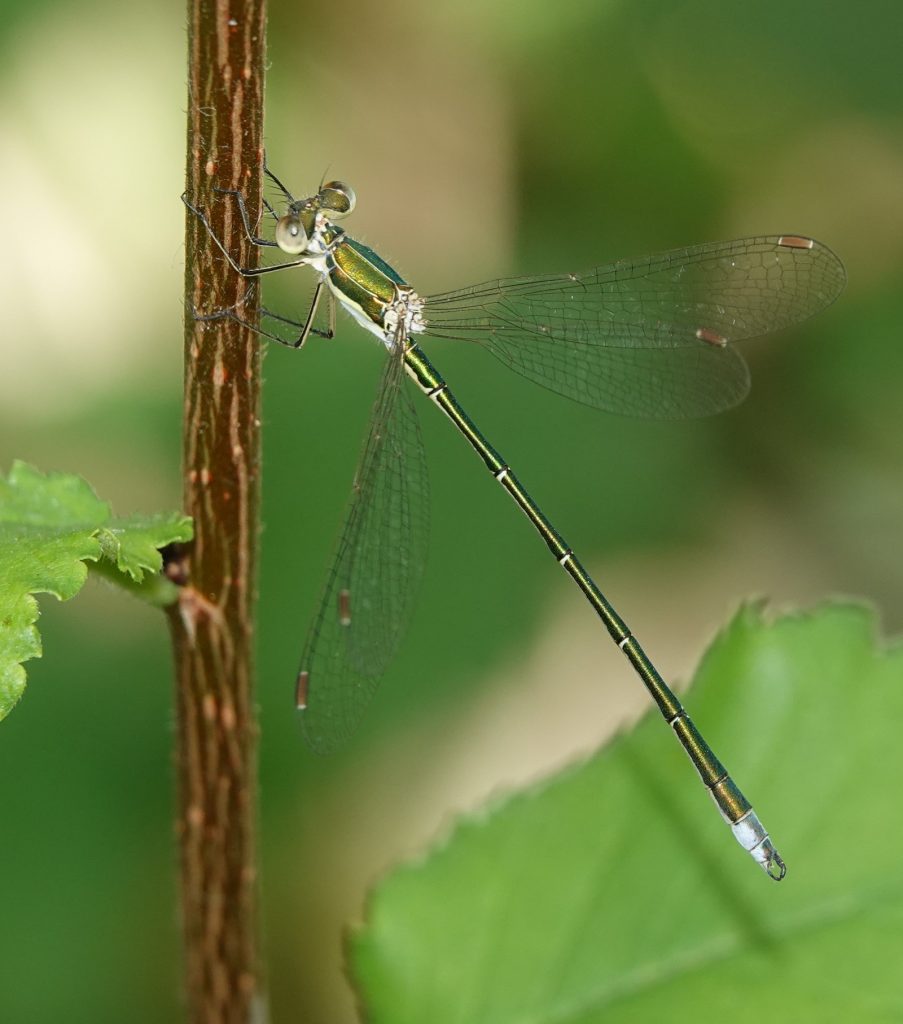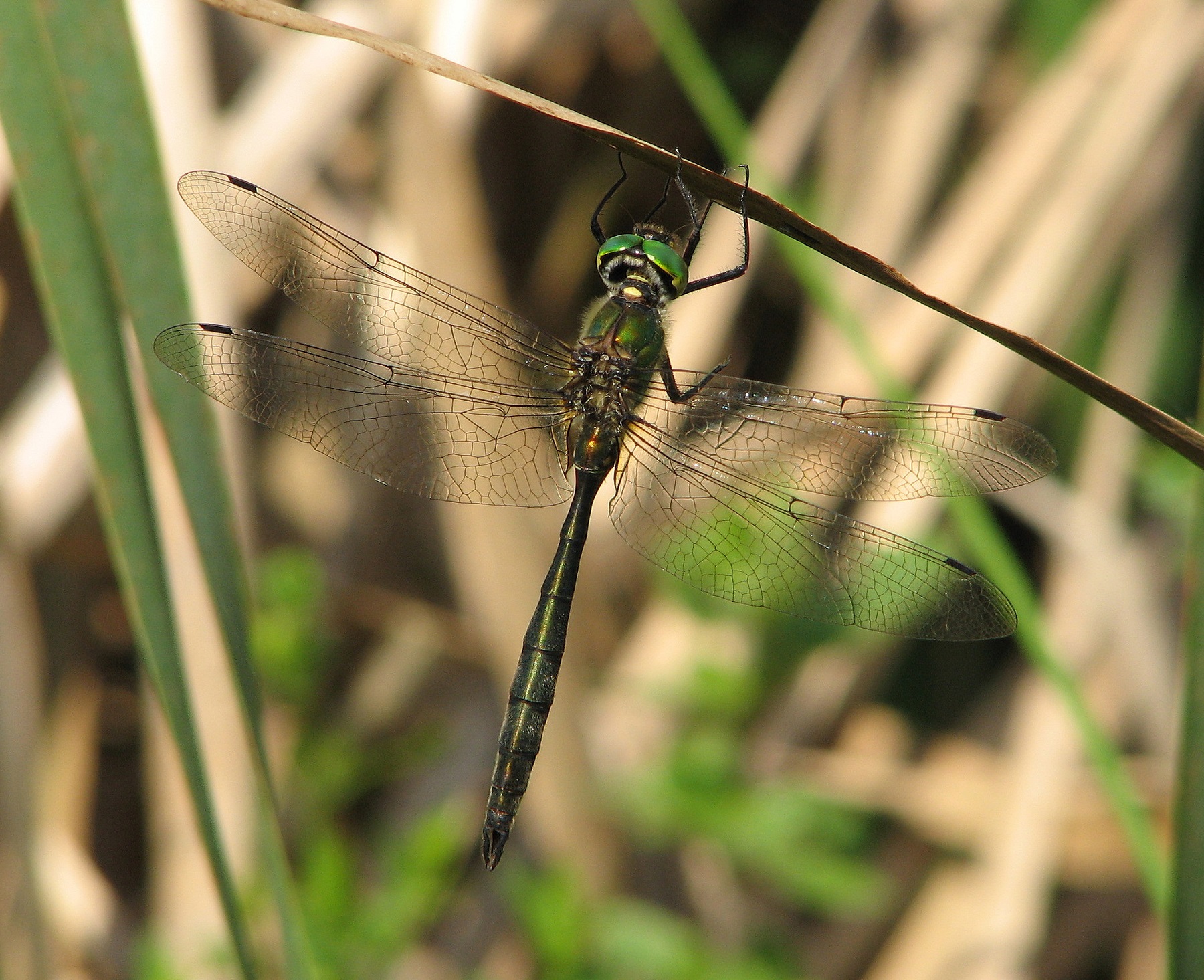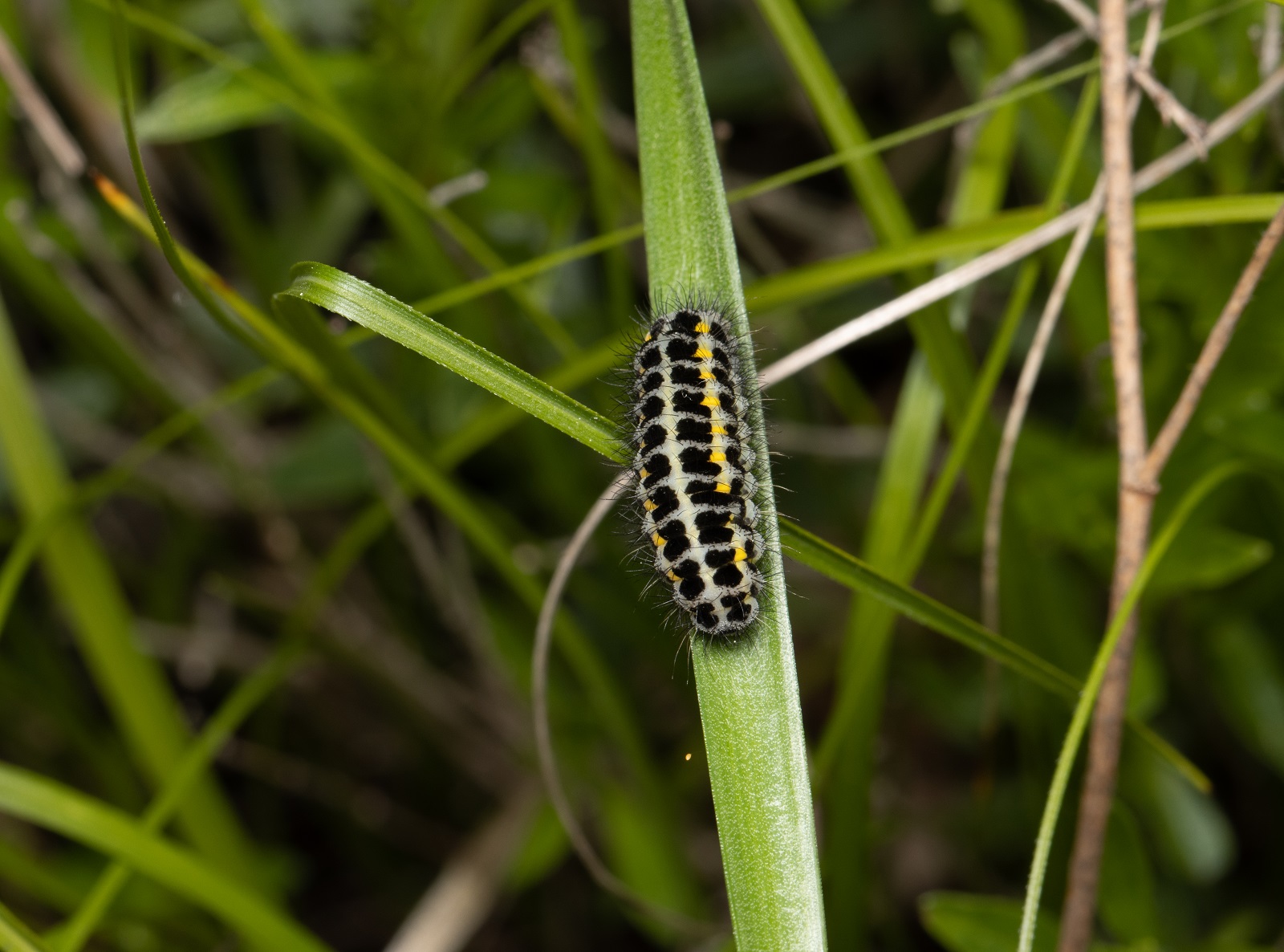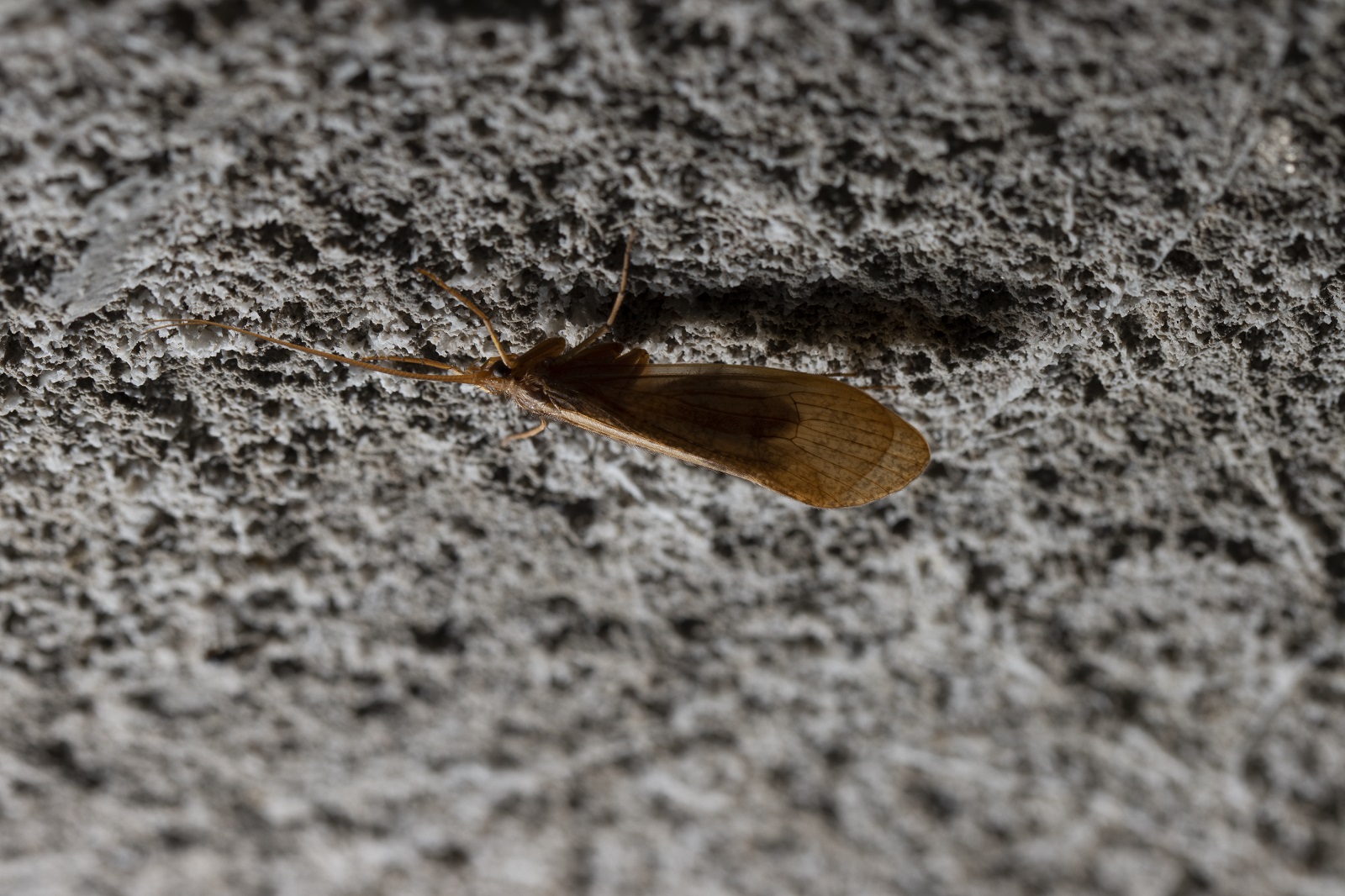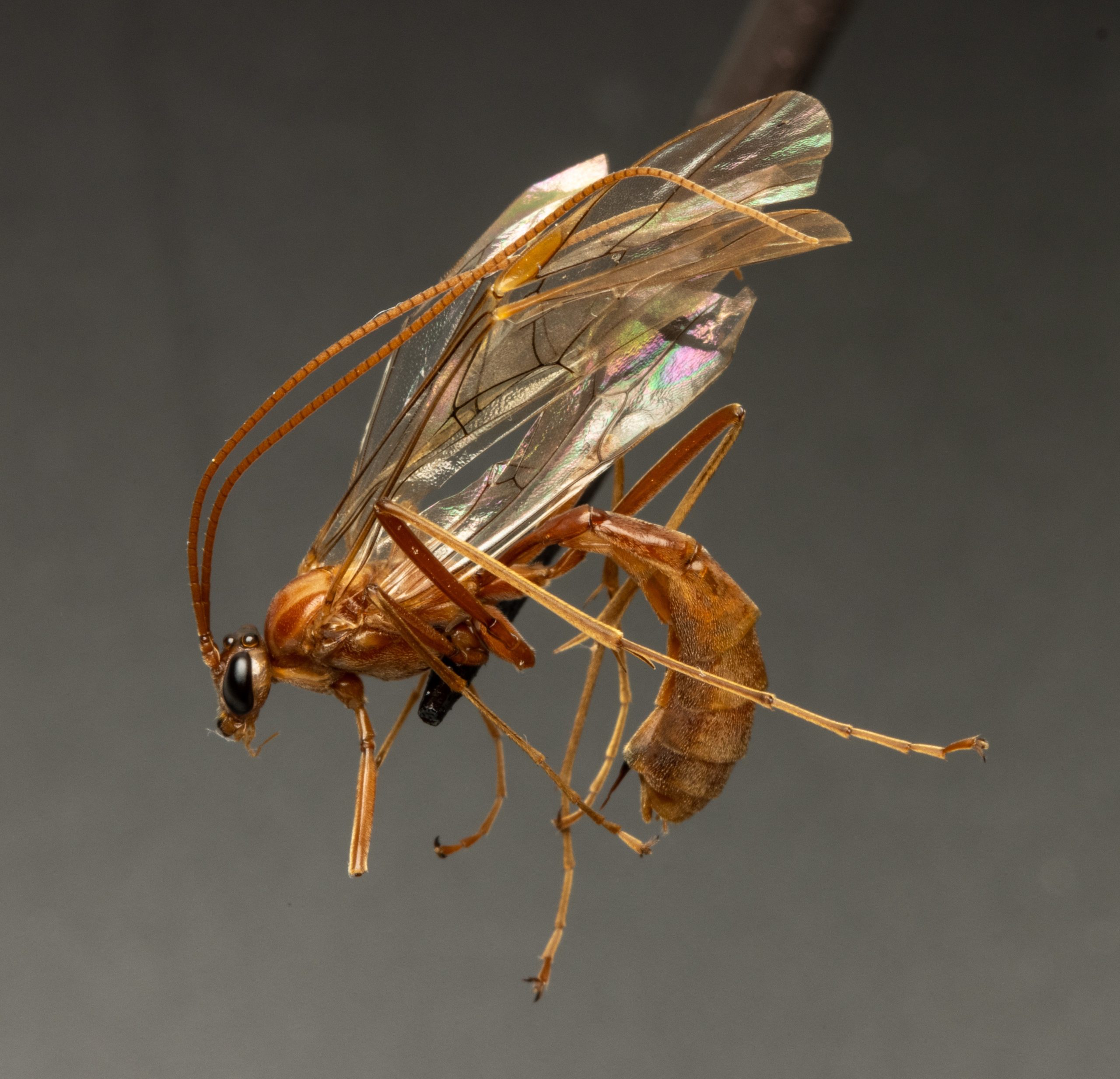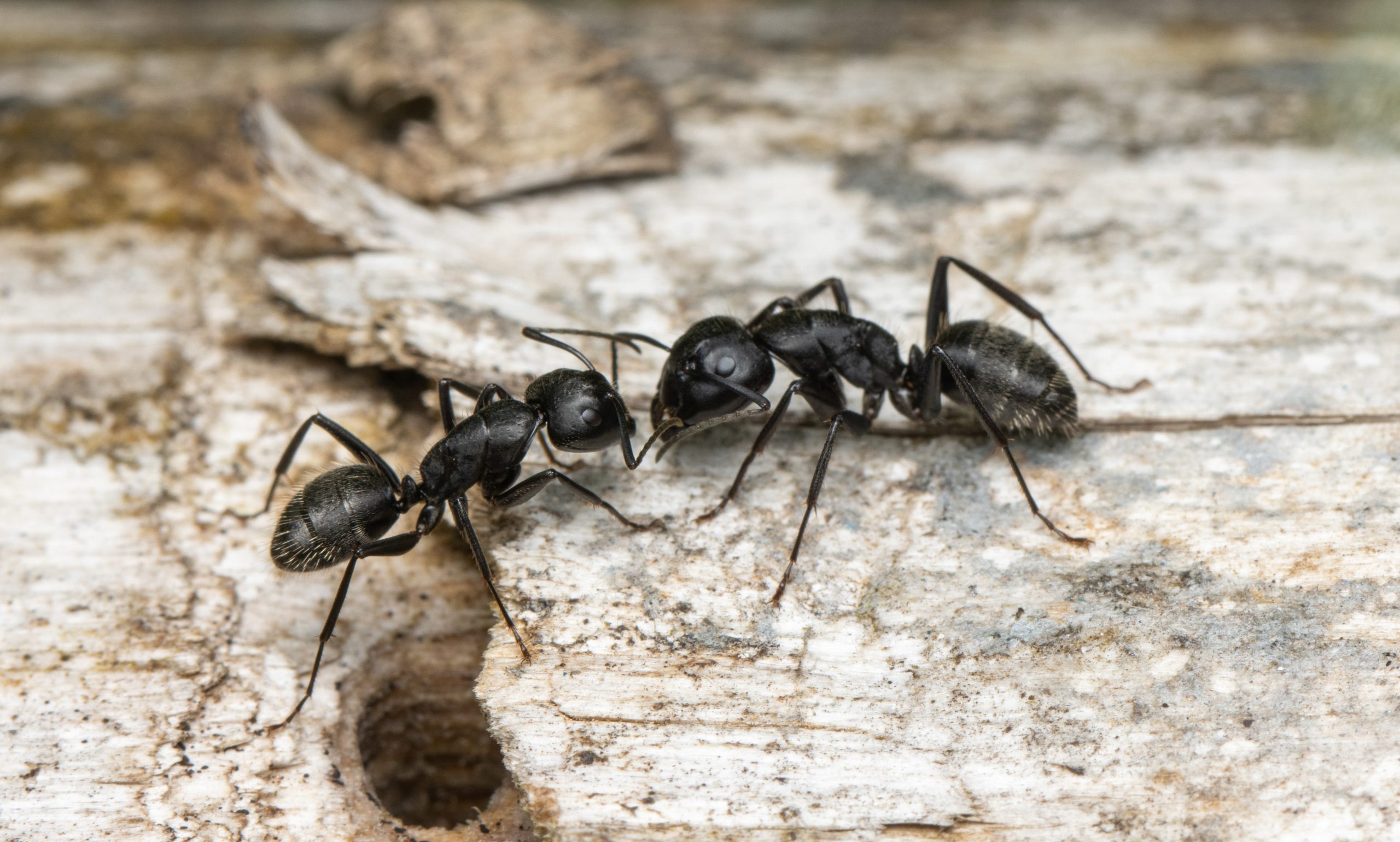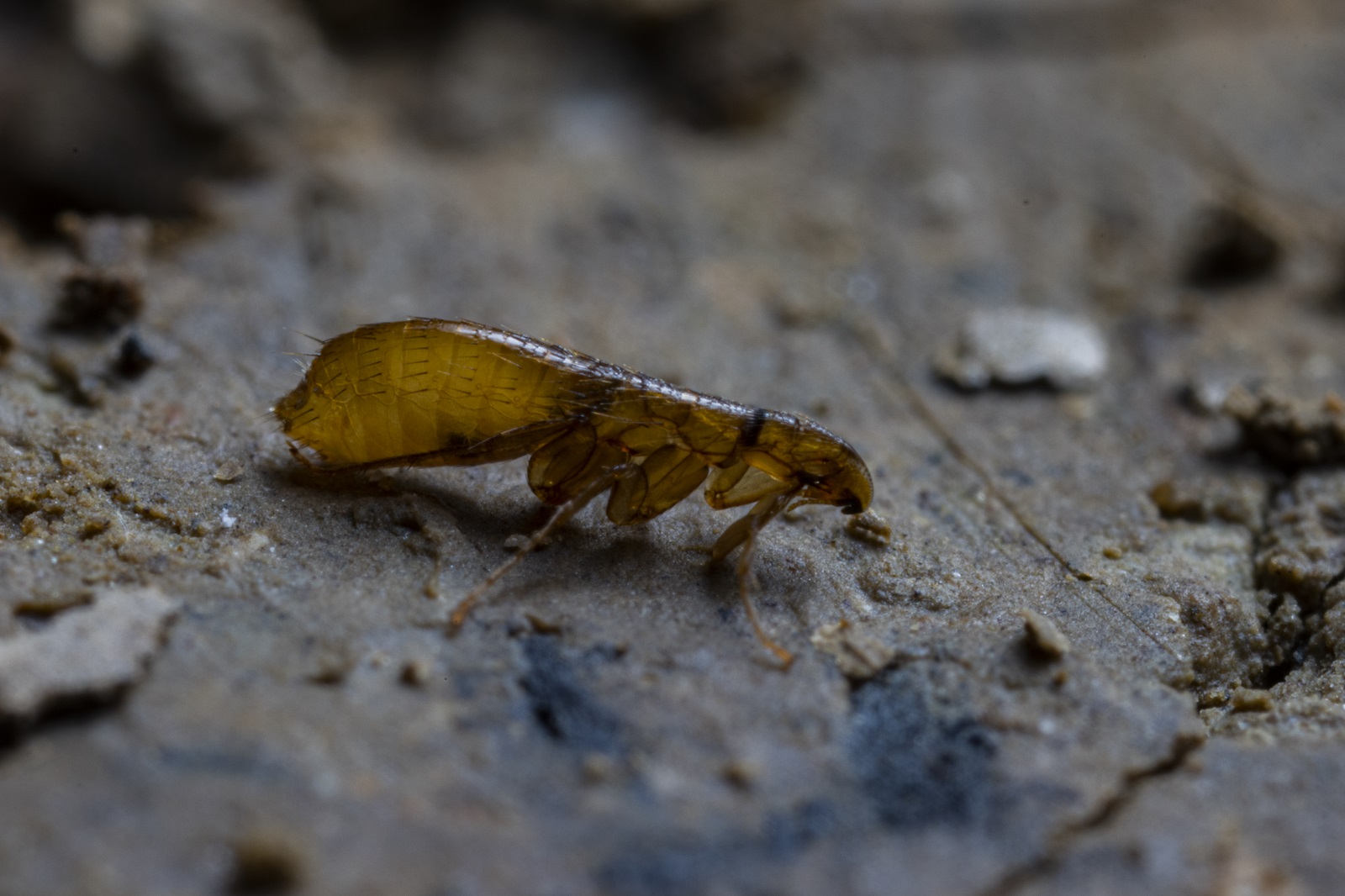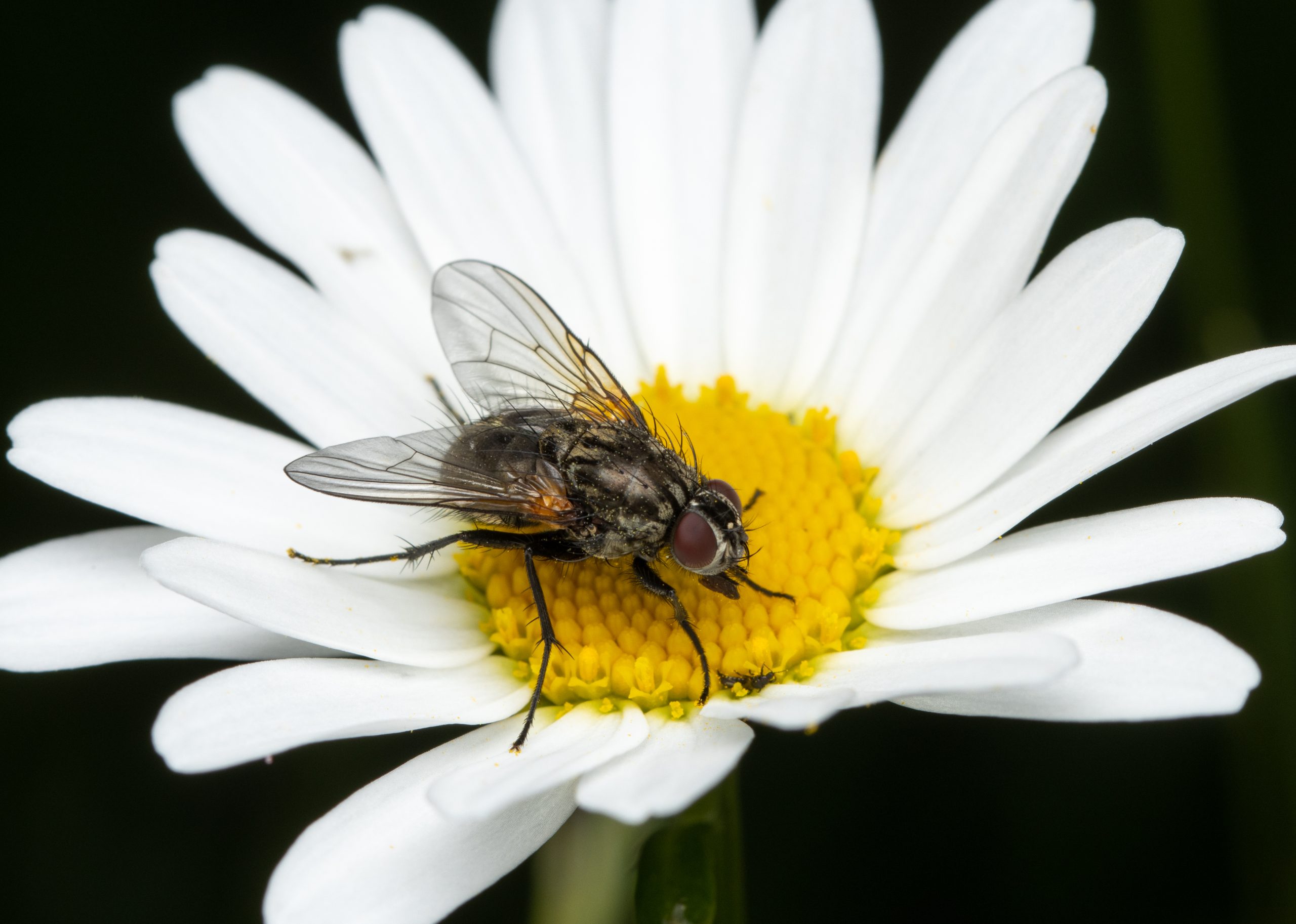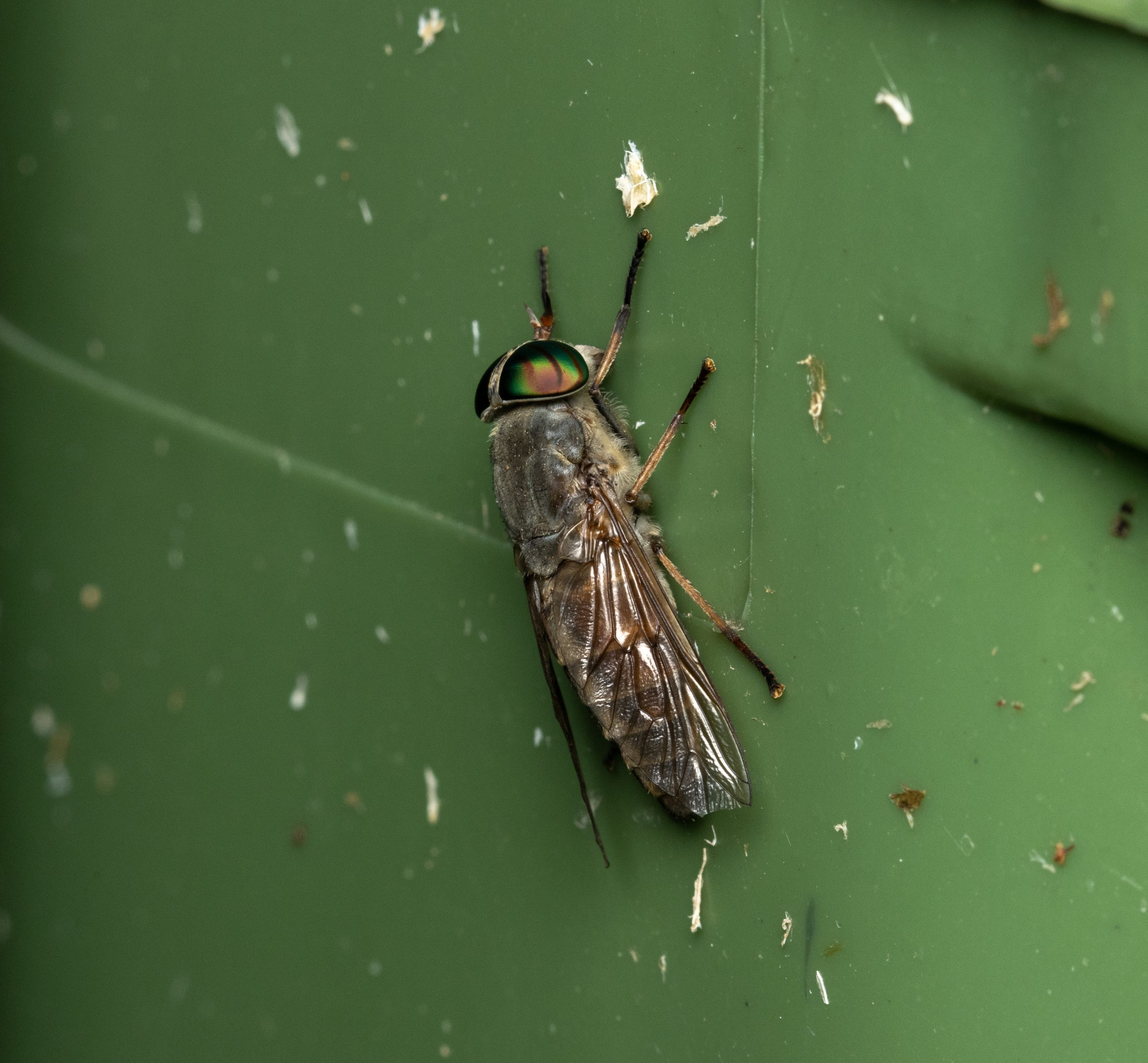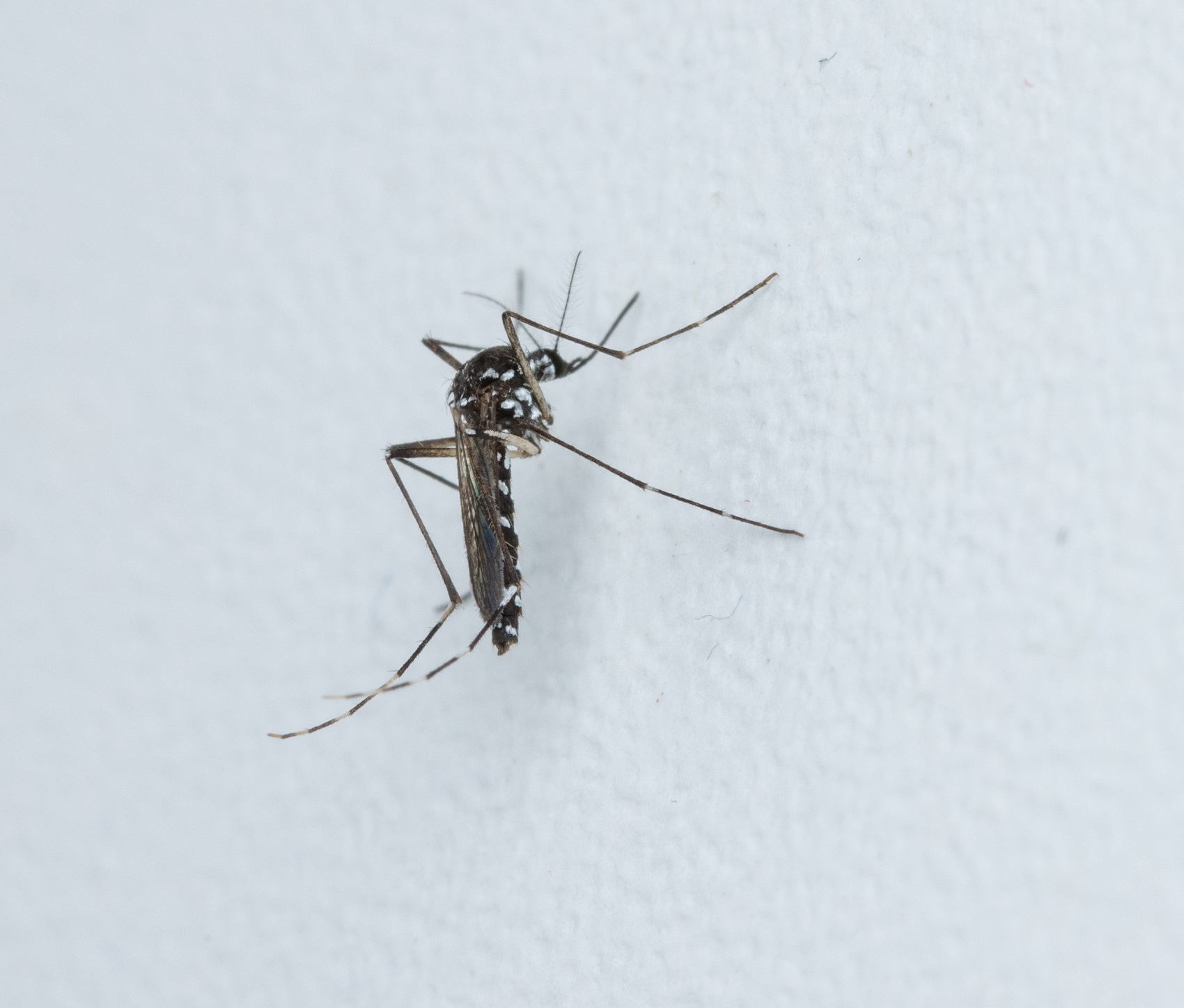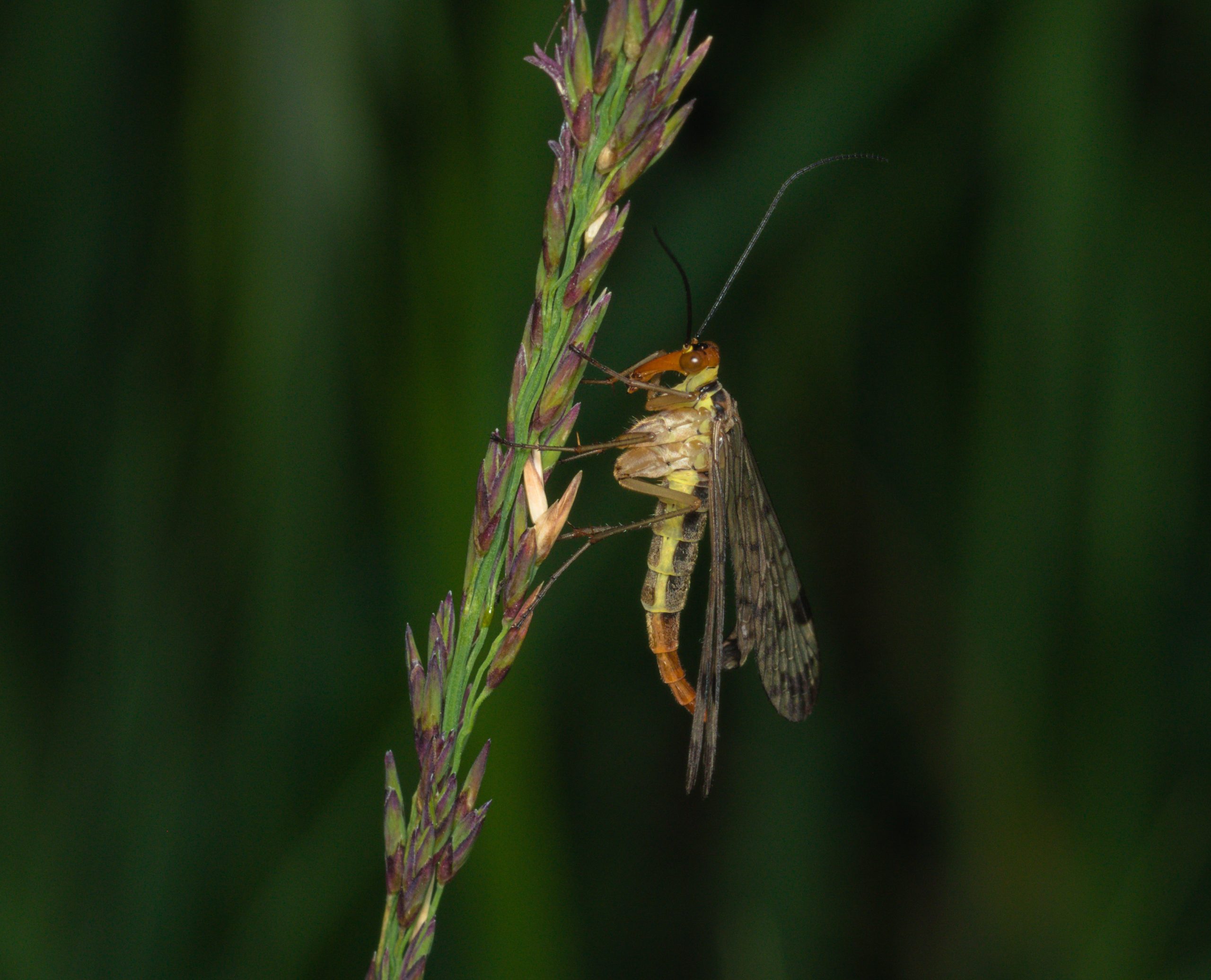- Insects
Zygoptera
Damselflies (Zygoptera) are characterised by having two pairs of equally sized, densely veined, membranous wings. The body is slender and particularly males have often bright metallic coloration. The body consists as in other insects of a head, thorax and abdomen. The body length is generally between 4 and 5 cm.
The head is narrow, with widely spaced large compound eyes and short, pointed antennae. Besides the compound eyes there are also three simple ocelli. The mouthparts are strong and adapted for chewing, enabling them to grasp and consume prey.
Thorax consists of three segments each bearing a pair of legs. Joint between the first thoracic segment (prothorax) and the head is highly flexible and allows rotation of the head at a large angle. The second (mesothorax) and third thoracic segment (metathorax) are fused, and each bears a pair of wings. While resting, they hold their wings either upright over the body or spread at a 45º angle.
The abdomen is long and slender and consists of ten segments. Males have genital organs on the second and third abdominal segments and curved abdominal appendages used to grasp the female during mating at the end of the abdomen. Females have a gonopore at the ventral side of the abdomen between the eighth and ninth segment. The females of some damselflies have an ovipositor at the end of the abdomen.
Damselflies inhabit all continents except Antarctica. Most species are associated with still or slow-flowing freshwater habitats, where their predatory larvae live.
They are hemimetabolous insects. Their larvae also called nymphs catch prey with extensible labium (fused second maxillae). Similar as the adults the nymphs also have characteristically slender body. Three feather-like gills originate at the end of the abdomen. The developmental stages of these insects are typically resistant to drying out, allowing them to survive in bodies of water that occasionally dry up. Females lay their eggs in the tissues of waterside vegetation, and sometimes even in the bark of branches overhanging the water.
More photos
Related arthropods

Authors
- Urban Bogataj,
- Gregor Bračko,
- Teo Delič,
- Cene Fišer,
- Žiga Fišer,
- Rok Kostanjšek,
- Rudi Verovnik,
- Miloš Vittori,
- Valerija Zakšek.
Students Vito Ham, Vesna Jurjevič, Gaj Kušar, and Adrijan Samuel Stell Pičman also participated in the project.
